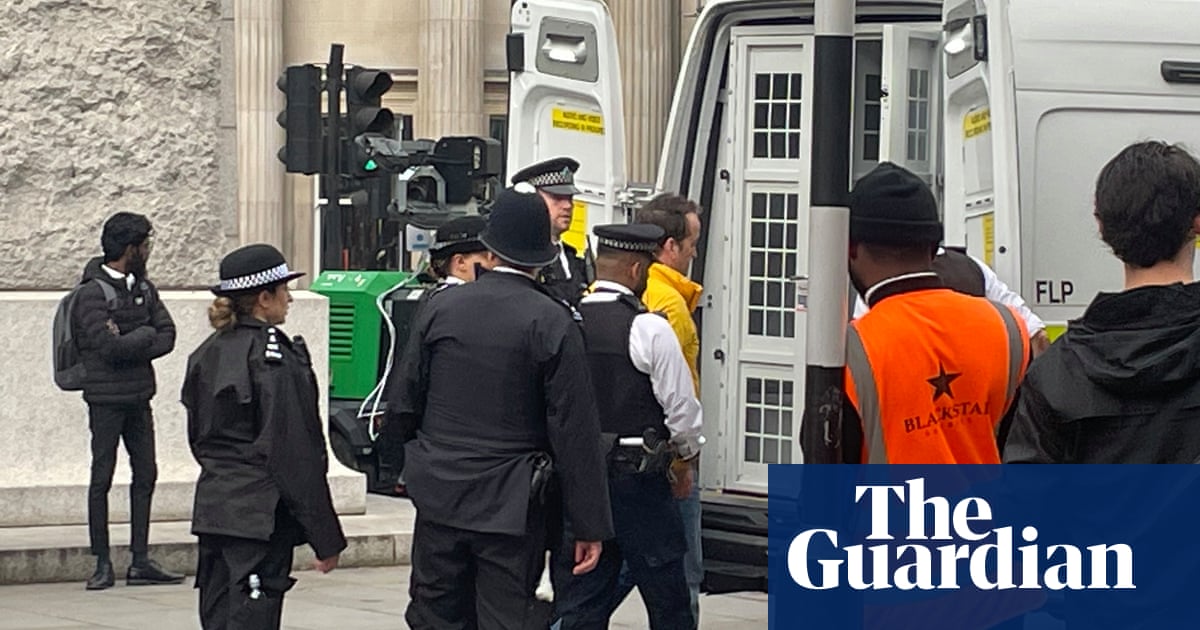New Orleans was still awash in the devastation of Hurricane Katrina and the then prime minister, John Howard, was in climate doubt and delay mode when Anthony Albanese got to his feet in the Australian parliament to argue for a better way ahead.
Then a mid-ranking opposition frontbencher, the future PM gave a nod to the carnage in Louisiana before running through the “profound risks’’ that Australia would face if greenhouse gas emissions kept rising – a now-familiar list including worsening heatwaves, less rain in the south, more rain in the north, more severe bushfires, cyclones, storms and ocean surges.
Declaring that a “suite of policies” was needed, he called for a national emissions trading scheme, an ambitious renewable energy target and “establishing a climate change trigger in federal environmental law”.
That was in September 2005. In the nearly 18 years since, two of those policies have come and gone as Australian politics waged war on itself to avoid sensible climate action. An emissions trading scheme – mislabelled a carbon tax – was passed in 2011 but later abolished by Tony Abbott. A renewable energy target was met in 2019 and not replaced.
The subject of Albanese’s speech was the third policy, a climate trigger. He was trying to introduce one via a private member’s bill (title: Avoiding Dangerous Climate Change). It failed, as bills put forward by opposition MPs inevitably do. But Albanese made a good case that hasn’t gone away.
There is a strong argument that a climate trigger’s time has hopefully, finally, belatedly come. It could be part of the solution to the impasse between Labor and the crossbench over the policy known as the safeguard mechanism. Even if it isn’t, the logic for it should be irresistible.
What is the safeguard mechanism?
ShowThe safeguard mechanism was introduced by the Coalition in 2016. It was promised to put a limit on greenhouse gas emissions from about 200 major industrial facilities.
It applies to facilities that emit more than 100,000 tonnes of carbon dioxide equivalent a year. Each facility is set an emissions limit, known as a baseline.
The Coalition said companies that emitted above their baseline would have to buy carbon offsets or pay a penalty. In practice, facilities were allowed to change their baselines, few were penalised and industrial emissions continued to increase.
Labor plans to revamp the scheme.
It would set new baselines based on emissions intensity – how much a facility releases per unit of production. Baselines will be reduced by 4.9% a year.
Companies could choose whether to make onsite emissions cuts or buy Australian carbon credit units.
New polluting facilities, including gas and coalmines, could open and would be set baselines at “international best practice”.
Companies that emit less pollution than their baseline allows would be awarded a new type of “safeguard credit”. These within-scheme credits could be sold to other polluting facilities that emit more than their baseline and need offsets.
Labor wants the changes to start on 1 July 2023.
As almost always in climate politics, there is a catch: Albanese and Labor have changed their position since 2005, and the government now opposes what he once advocated.
Before going further we need to set out what we’re talking about. A climate trigger under national environment laws would force the government to consider the emissions damage of a big emitting project – a fossil fuel mine or industrial plant – when assessing whether they should go ahead.
The Environment Protection and Biodiversity Conservation (EPBC) Act requires the government to consider the impact of major developments on “matters of national environmental significance”. An assessment is triggered when one is potentially at risk. Nine matters of significance are listed, including world heritage sites, threatened species, migratory species and the Great Barrier Reef Marine Park.
The Liberal environment minister who oversaw the introduction of the EPBC Act in 1999, Robert Hill, proposed including what was then called a greenhouse trigger from the outset. A model was put forward for consultation, but the plan was left on the shelf.
Twenty-four years later, the scientific evidence that unchecked fossil fuel developments are the main problem driving the climate crisis – and that rising emissions are a major threat to the natural world – is all one way and escalating. A five-yearly state of the environment report last year showed pressure from higher temperatures due to rising atmospheric CO2 is hurting Australia’s natural heritage and wildlife.
A climate trigger as part of the response to this could be designed in a number of ways. It could kick in for developments expected to emit above a certain level – the Greens have proposed 100,000 tonnes of CO2 a year – or set an emissions intensity threshold based on how dirty production is regardless of scale. Or both.
It could take into account emissions within Australia only or factor in the much larger – and mostly locally ignored – “scope 3” pollution released after coal and gas is exported and burned overseas. It could apply just to fossil fuel and industrial sites, or expanded to also deal with forest destruction and land clearing.
A trigger would be unlikely to act as a red line. Environment ministers have significant discretion over approval decisions under the EPBC Act. While everyone agrees the current model has failed, it is highly unlikely the government would allow an upcoming revamp – and the introduction of an Environment Protection Agency – to remove its power to decide what goes ahead.
after newsletter promotion
What a climate trigger would do is require a legal justification of why developments that affect the climate should be allowed. Given the scale of the problem, that is long overdue.
The government’s main argument against a climate trigger is that a 2020 review of the EPBC Act by the former competition watchdog head Graeme Samuel did not recommend one. Samuel’s position was that environment laws should not duplicate other policies meant to regulate emissions.
This recommendation should be seen in the context of the politics when it was made. The Morrison government was not interested in forcing anyone to act to reduce their climate impact, and Samuel understandably wanted a system that could succeed and endure. A climate trigger was not going to reach the starting gate.
That’s no longer clear-cut. A majority in the parliament now agrees climate change demands government intervention, and the crossbench strongly supports a trigger. Samuel did make a significant nod in the direction of a trigger.
He suggested businesses’ major developmental proposals that could have a significant environmental impact should instead have to calculate and publish emissions forecasts, and “explicitly consider the effectiveness of their actions” to prevent environmental damage from CO2. The environment minister, Tanya Plibersek, has endorsed this.
It makes sense, as far as it goes. Greater transparency can increase pressure to act. But if companies have to produce information on their climate impact why shouldn’t a minister charged with protecting the environment have to thoroughly consider it under the law? It’s a challenging case to make.
The PM wasn’t trying to make it in 2005. He described the absence of a climate trigger as a “glaring gap” in environment laws that needed to be closed to “ensure new developments represent best practice”.
That he isn’t saying it any more doesn’t it make any less true today.

 1 year ago
73
1 year ago
73










 English (US)
English (US)